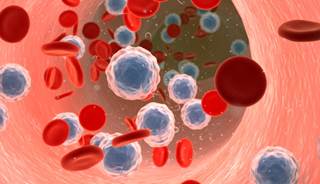Leave a Comment:
2 comments
Hi David, I could not find the link below the video to click to order the basic package that you spoke about. I am very keen to get onto the supplement/ diet regimen that you speak of.
Reply
Learn how you can stall the development of full-blown Multiple Myeloma with evidence-based nutritional and supplementation therapies.
Click the orange button to the right to learn more.

Smoldering Multiple Myeloma (SMM) is a term used for pre-multiple myeloma. SMM is not cancer. SMM patients have an increased risk of a full MM diagnosis. The key is to determine your individual risk and to undergo therapies to reduce your risk of full MM.
Though the article linked below is titled “multiple myeloma” I have excerpted those statistics that are about smoldering multiple myeloma (SMM). It is important to note also that the facts/statistics linked below are based on conventional oncology’s experience.
My experience and research of the world of myeloma cancer care have been very different than what is conveyed by conventional oncology. Aggressive, standard-of-care MM therapies did little to manage my MM but caused a number of short, long-term and late stage side effects.
I am a long-term survivor first of pre-MM and then of full multiple myeloma.
While I believe that conventional therapies are an important weapon in the long-term care of all MM patients and survivors, experience and research have taught me that:
I was diagnosed in 2/94 with a single plasmacytoma, progressed to MM and failed all forms of conventional MM treatment by 9/97. I underwent an evidence-based non-conventional therapy and reached complete remission by 4/99.
I live in complete remission from my MM by living an evidence-based, non-toxic, anti-MM lifestyle through nutrition, supplementation, lifestyle therapies and more.
I have been researching and writing about smoldering multiple myeloma for years now. Consider every aspect of your pre-cancer.
Have you been diagnosed with smoldering multiple myeloma? Scroll down the page, post a question or a comment and I will reply to you ASAP.
To Learn About Pre-Myeloma (SPB, MGUS, MGCS, SMM), diagnostics, symptoms and therapies- click now
David Emerson
“Smouldering myeloma is a disease classified as intermediate in a spectrum of step-wise progressive diseases termed plasma cell dyscrasias. In this spectrum of diseases, a clone of plasma cells secreting monoclonal paraprotein (also termed myeloma protein or M protein) causes the relatively benign disease of monoclonal gammopathy of undetermined significance.
This clone proliferates and may slowly evolve into more aggressive sub-clones that cause smouldering multiple myeloma…
Smouldering myeloma, however, is not a malignant disease. It is characterised as a pre-malignant disease that lacks symptoms but is associated with bone marrow biopsy showing the presence of an abnormal number of clonal myeloma cells, blood and/or urine containing a myeloma protein, and a significant risk of developing into a malignant disease.[2]”
From Standard Of Care
Hi David, I could not find the link below the video to click to order the basic package that you spoke about. I am very keen to get onto the supplement/ diet regimen that you speak of.
Reply